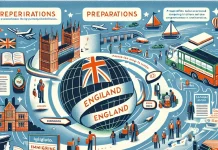Skipton, a charming market town nestled in the heart of North Yorkshire, boasts a rich history that spans over centuries. Its journey begins in Roman times, where early settlements laid the foundations for its development, and continues through medieval prosperity, industrial growth, and modern transformation. This detailed timeline explores the key historical milestones that have shaped Skipton into the vibrant community it is today.
Roman-era settlements (1st – 4th centuries AD)
During the Roman occupation of Britain, packages of evidence, including coin finds and artifacts, suggest the presence of Roman roads and small settlements around the Skipton area. These early establishments served as strategic trading posts and military outposts, facilitating communication and control over the region. The strategic location near the Craven Fault allowed Romans to monitor local tribes and exert influence over the fertile plains.
Early medieval period and the Norman influence (5th – 12th centuries)
Following the decline of Roman Britain, the area witnessed the emergence of early Anglo-Saxon communities. The construction of fortifications and the establishment of local manors laid the groundwork for future urban growth. By the 11th century, Norman influence became evident with the construction of Skipton Castle designed to control the craven region and act as a defense against invading forces.
Medieval prosperity and the rise of market towns (13th – 15th centuries)
Skipton’s development as a market town was solidified in the 13th century when it received its market charter, allowing local farmers and traders to sell their produce freely. The town grew rapidly, becoming a hub for wool and textile trade, which propelled its economic prosperity. The medieval period also saw the construction of significant infrastructures like the parish church and fortified walls, contributing to Skipton’s strategic importance.
Early modern period and the impact of the Reformation (16th – 17th centuries)
The Reformation brought significant social and religious changes to Skipton. monasteries and previous ecclesiastical properties were dissolved, and new places of worship emerged. The wool industry continued to thrive, which fueled local wealth and enhanced trade connections with European markets. The period also marked the beginning of agricultural advancements, laying the foundation for later industrialization.
Industrial revolution and the expansion of transportation (18th – 19th centuries)
The Industrial Revolution in Britain dramatically transformed Skipton. The introduction of the Leeds and Liverpool Canal in the 18th century provided efficient transportation for goods, boosting trade and industry. The construction of the railway in the 19th century further accelerated development, facilitating movement of textiles, coal, and other resources. The town’s population increased as industries prospered, and new housing developments emerged to accommodate workers.
20th century: Modernization and resilience
Despite challenges such as world wars and economic shifts, Skipton continued to grow into a thriving market town. Post-World War II reconstruction, local government reforms, and the expansion of educational and cultural institutions contributed to community resilience. The preservation of historic sites, alongside modern amenities, fostered a unique balance of heritage and progress.
21st century: A vibrant and sustainable community
Today, Skipton reflects both its storied past and ambitious future. Focused on sustainability, the town promotes heritage tourism and incorporates eco-friendly initiatives. Its historic castle and market square attract visitors, supporting local businesses and preserving the town’s legacy. The community’s continuous evolution exemplifies resilience, innovation, and respect for history.
Summary
From its humble beginnings as a Roman settlement to its current status as a lively market town, Skipton’s history is a testament to resilience and growth. Key milestones such as the granting of a market charter, industrial expansion, and modern sustainability efforts showcase its dynamic evolution. Exploring Skipton’s timeline unveils an inspiring story of heritage, commerce, and community spirit that continues to thrive today.
For more information on Skipton’s history, visit the official Craven District Tourism website or explore detailed historical records available in local archives.


